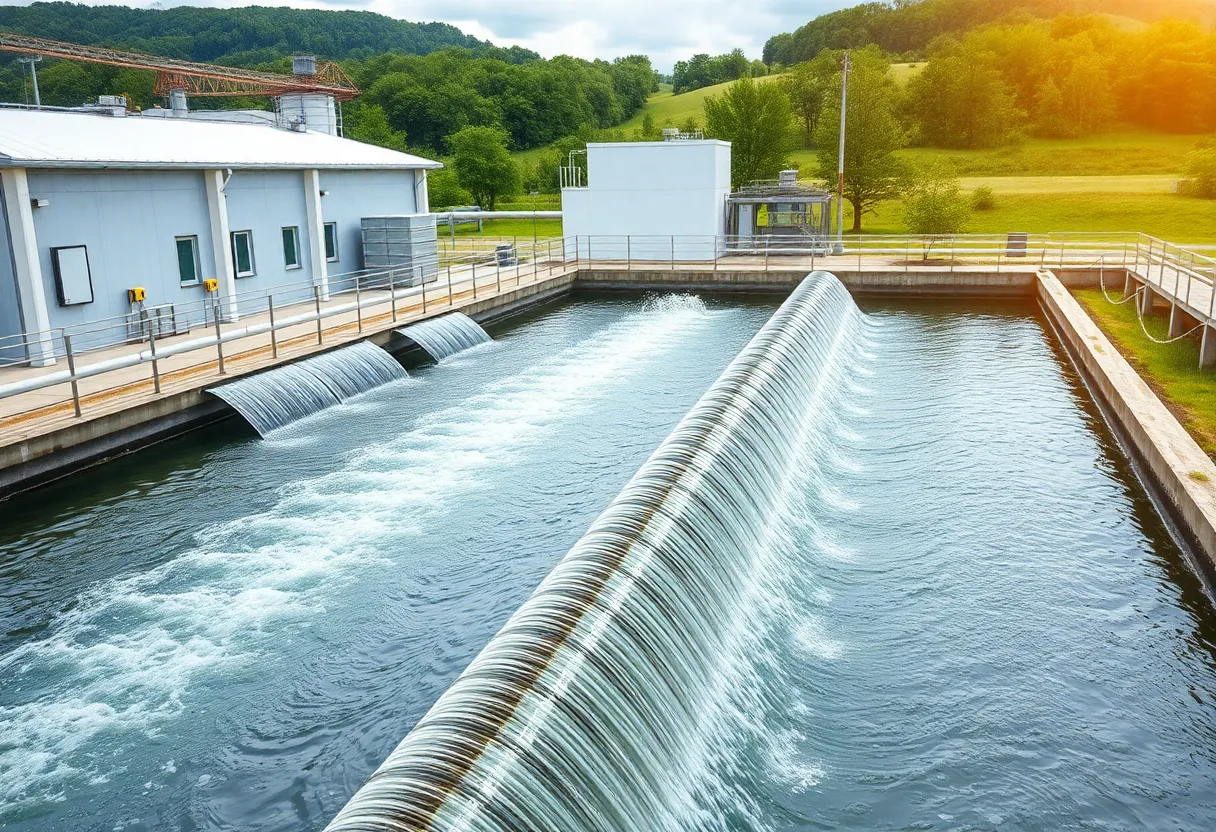News Summary
Orange County is revolutionizing water management with its Groundwater Replenishment System, transforming sewage into clean, potable water. This facility, operational since 2008, processes up to 130 million gallons daily, significantly aiding local aquifers and sustainability. As California faces water supply challenges, such innovations could pave the way for future water solutions, integrating recycling with broader management strategies. While concerns persist in regions like Indian Wells Valley, efforts to enhance water resilience include new regulations and construction plans aimed at conserving and purifying water resources effectively.
Orange County’s Innovative Solution to Water Scarcity
Welcome to Orange County, where the future of drinking water is taking shape, proving that with a bit of creativity, even sewage can be transformed into something refreshing! The Orange County Groundwater Replenishment System is making waves (pun intended) in the fight against water scarcity by turning what most people consider waste into clean, potable water in less than an hour! This groundbreaking facility is not just a local gem; it could set a precedent for water-scarce areas across the nation.
A Quick Look at the Process
With the ability to process up to 130 million gallons of water daily, the facility is enough to quench the thirst of about one million residents. So, how does it work? It involves a nifty three-step advanced treatment process that includes microfiltration, reverse osmosis, and a little twist of ultraviolet light mixed with hydrogen peroxide. Sounds high-tech? It is! And the result? A product that meets both state and federal drinking water standards—making it safe for everyone to enjoy.
Focus on Local Aquifers
Once this clean water is produced, it flows primarily to Anaheim, helping revitalize lakes that play a crucial role in replenishing the local aquifer. For a region so heavily reliant on imported water, this innovation is a game-changer, providing both a sustainable solution and reducing dependence on outside sources.
A Pioneering Initiative
Opened back in 2008, this facility is notable for being the first of its kind in the United States, drawing inspiration from similar successful projects in places like Israel, Singapore, and Kuwait. While this system is impressive, it’s essential to remember that recycling alone isn’t a silver bullet for long-term water sustainability, especially in regions facing significant groundwater overdrafts, such as the Indian Wells Valley.
Collaborative Strategies Needed
The Indian Wells Valley Groundwater Authority emphasizes that while recycled water plays a vital role, an “all of the above” strategy is necessary to tackle water supply challenges. Recent studies also indicate that limits on the ability to recycle wastewater could drive water rates up for consumers if new treatment plants need to be built.
California’s Water Woes
Southern California, with its geographical challenges, predominantly relies on imported water. This scenario leads to a situation where most of its population and agricultural activities are situated in drier regions. To combat this, California has implemented a Groundwater Sustainability Plan, allowing water to be imported to the Indian Wells Valley basin from the State Water Project, addressing critical issues of overdraft.
Connect the Dots with New Pipelines
To enhance water availability, the Indian Wells Valley Water Replenishment Pipeline is on the horizon, providing a direct link from the State Water Project. This initiative is mostly funded through various state and federal resources. Without new sources, projections suggest that water quality will continue to decline, with depletion risks looming over the next 40 years.
Cautious Optimism for Ridgecrest
But it’s not all rainbows and sunshine. The city of Ridgecrest struggles with generating enough wastewater to fulfill the needs of its aquifer, presenting long-term risks of over-reliance on recycling. Additionally, the costs for such recycling efforts in areas like the Indian Wells Valley are reportedly higher than those in Orange County, mainly due to inadequate infrastructure.
Bright Prospects Ahead
On a brighter note, recent Californian regulations now permit direct potable reuse of treated wastewater, a crucial step toward enhancing water supply resilience in the face of climate change challenges. In fact, Los Angeles plans to build new facilities aimed at purifying treated wastewater, with a goal of creating 20 million gallons of drinking water daily by 2027. This is an exciting step toward reducing dependency on unreliable imported water.
Integrating Water Management Strategies
Experts stress the importance of not just recycling but also integrating various water management strategies. Incorporating stormwater management alongside recycling systems may pave the way for better resilience and redundancy in water supply. With these innovative plans in motion, Orange County and its surrounding regions are undoubtedly forging new paths in sustainable water management.
Deeper Dive: News & Info About This Topic
HERE Resources
Additional Resources
- Maven’s Notebook: Ridgecrest Water Recycling
- WaterWorld: Largest Groundwater Recharge Plant
- Fullerton Observer: Orange County Resilience Plan
- Inkl: Recycling Sewage to Drinkable Water
- LA Times: Los Angeles Wastewater Recycling Efforts
- Wikipedia: Water Recycling
- Google Search: Water Sustainability
- Google Scholar: Water Reuse Technologies
- Encyclopedia Britannica: Water Sustainability
- Google News: California Water Recycling







